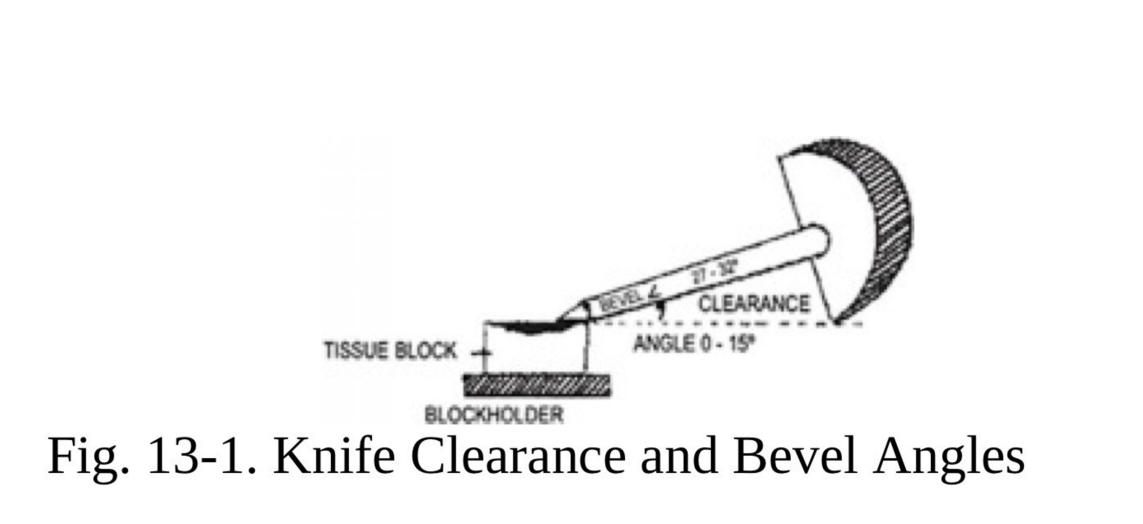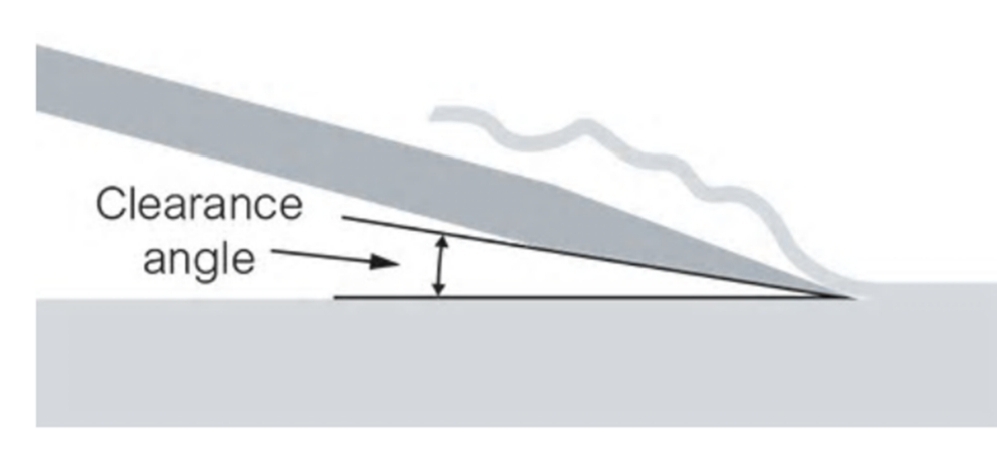Cutting Sections and Electron Microscopy
1/20
There's no tags or description
Looks like no tags are added yet.
Name | Mastery | Learn | Test | Matching | Spaced |
|---|
No study sessions yet.
21 Terms
Once the tissues have been embedded and the wax has solidified, the wax block is removed from the mold, the identification number is noted and the excess wax is cut off from the block to expose the tissue surface in preparation for actual cutting
Only thin slices are taken out at a time to prevent block from cracking
Trimming
useful to uncover the surface of the block to reveal the tissue
Coarse Facing / Coarse Trimming
Coarse facing is done on the microtome at approximately - microns at a time until the entire tissue surface is exposed
30 microns
can be done by setting the thickness adjuster at 15 mm or by advancing the block using the coarse feed mechanism
Fine trimming
Fine trimming
the knife is usually tilted at - to - celcius angulation on a microtome to allow a clearance angle between the cutting facet and the tissue block
- require smaller clearance angles that wedge-shaped knives
0 to 15 degress celcius
Biconcave knives
Knife Clearance and Bevel Angles

Final Test for Sharpness
slight reflection
Perfect straight line
Final test for Sharpness
the angle between two facets that form the cutting edge of the knife
Bevel angle
Bevel angle
- bevel angle results in a sharper knife
smaller
Bevel angle
recommended for general use is around - to -
27 to 32 degrees
Angle between lower face of the knife and block holder
Clearance angle
Clearance angle
its set to prevent the entire bevel face from sliding over the block, which can cause _
friction damage
Clearance angle
optimal clearance angle is generally between - to - degrees for paraffin section
3 and 8 degrees
angle between block and knife that allows for maximum penetration into the and minimizes distortion during the cut tissues
Perfect/Optimum Cutting angle
Perfect/Optimum Angle
the optimum cutting angle is approx. _
15 degrees
Clearance angles

should expand the section to its original dimensions and ensure that is completely flat
Flotation
Flotation
the temperature will need to be - to - degrees below melting point of wax
5 to 9 degrees celcius
Flotation
Sections should not be left on the water bath for a long time (- seconds will be enough is enough) to avoid undue expansion and distortion of tissue
30 seconds
indicates the edge is still intact and sharp
Slight reflection
along the cutting edge confirms no nicks or dull spots, essential for precise cuts
Perfect straight line